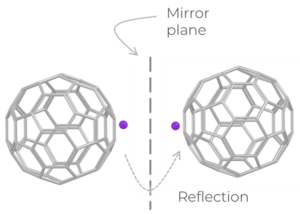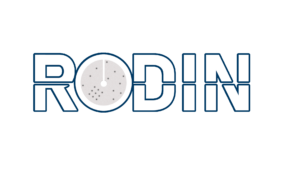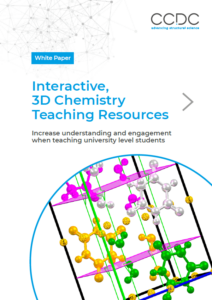Education
Structural Chemistry Teaching Materials
On this page, you can access more information on the Teaching subset, teaching modules that have been created for use in classrooms, and the Database of Educational Crystallographic Online Resources (DECOR); an online resource for the sharing, and borrowing of educational resources for crystallography.
Sign up for our Training, Education and Outreach Newsletter
CSD Teaching Subset
Our 850+ structure teaching subset includes a wide variety of molecules and can be used to enhance learning across the chemistry curriculum.

Access the CSD Teaching Subset
Teaching Modules
Access bite-sized modules for teaching structural chemistry concepts in the classroom.

Access Bite-sized Teaching Modules
DECOR
An online resource for the sharing, and borrowing of educational resources for crystallography.

Access DECOR Resources by Type or Topic
RODIN
An online resource providing raw diffraction images for use in the teaching and education of crystallography

Access RODIN
Short Guide to CIFs
An introduction to Crystallographic Information File, the type of information that can be included, the format and how information is stored within a CIF.

Access a Short Guide to CIFs
White Paper
A guide to 3D, interactive resources for teaching Chemistry at university level.

Download the White Paper
Use Cases
“The Cambridge Structural Database (CSD) is a wonderful asset to my teaching chemistry at both the university introductory level and in an advanced inorganic chemistry course. I have been using it for over 20 years to illustrate the 3-D structures of interesting molecules! Recent improvements and the availability of the Teaching Database, Mercury, and WebCSD, have made the CSD my primary (and indispensable) teaching tool. Students inevitably love seeing the magnificent structures and Mercury is so easy to use that they become captivated.
Specifically, in the introductory course, I utilize it to illustrate the structures of interesting molecules such as pesticides (such as DDT and Aldrin, Dieldrin), common medicinal compounds (e.g., aspirin, penicillin), the nucleic acid bases, and molecules involved in food chemistry (capsaicin). Some of the teaching modules (for example, VESPR theory) are quite useful.
For the advanced course, I have students use the database to (1) investigate metal-complex geometries (coordination numbers 2-10); (2) view ligand structures and how they get modified when they are complexed to metals; (3) investigate point group and space group symmetry elements and chirality in inorganic complexes; (4) do some of the educational modules; (5) design homework assignments where students measure bond distances and angles, intermolecular interactions, (6) visualize structural changes that result when functional groups are changes, etc.”
Miriam Rossi, Professor of Chemistry at Vassar College
Publications
- Learning about intermolecular interactions from the Cambridge Structural Database
G. M. Battle and F. H. Allen, J. Chem. Educ., 89, 38-44, 2012 10.1021/ed200139t - Teaching chemistry in 3D using crystal structure data
S. Henderson, G. M. Battle, and F. H. Allen, Education in Chemistry, Vol 48, No. 6 (November 2011). - Teaching 3D structural chemistry using crystal structure databases 4: Advanced examples of discovery-based learning
G. M. Battle, F. H. Allen, G. M. Ferrence, J. Chem. Ed. 88, 891-897, 2011 10.1021/ed1011025 - Teaching 3D structural chemistry using crystal structure databases 3: The Cambridge Structural Database System – database content and access software in educational applications
G. M. Battle, F. H. Allen, G. M. Ferrence, J. Chem. Ed., 88, 886-890, 2011 10.1021/ed1011019 - Applications of the Cambridge Structural Database in Chemical Education
G. M. Battle, G. M. Ferrence, F. H. Allen, J. Appl. Cryst., 43, 1208-1223, 2010 10.1107/S0021889810024155 - Teaching 3D structural chemistry using crystal structure databases: 2. Example teaching units that utilise an interactive web-accessible subset of the Cambridge Structural Database
G. M. Battle, F. H. Allen, G. M. Ferrence, J. Chem. Ed., 87, 813-818, 2010 10.1021/ed100257t - Teaching 3D structural chemistry using crystal structure databases: 1. An interactive web-accessible teaching subset of the Cambridge Structural Database
G. M. Battle, F. H. Allen, G. M. Ferrence, J. Chem. Ed., 87, 809-812, 2010 10.1021/ed100256k
Sign up for our Training, Education and Outreach Newsletter
Receive updates about training events and resources.